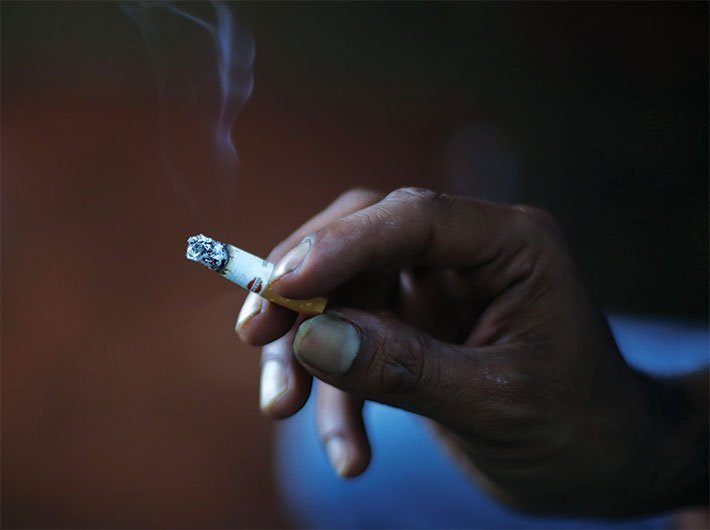Tobacco use among adults has come down in Maharashtra, showed the findings of the latest Global Adult Tobacco Survey (GATS2) .
As compared to earlier report of GATS1 (2009-2010), the number of adult tobacco users have reduced from 31.4% to 26.6% in 2016-2017, a reduction of 4.8 percentage points in the last seven years.
The survey was conducted under the health ministry along with World Health Organisation, Centre for Disease Control and Prevention and Tata Institute of Social Sciences. One member aged 15 and above from the sampled households were randomly interviewed. In Maharashtra 1,517 males and 1,624 females were interviewed between November – December 2016.
The survey showed that smoking has decreased among adults from 6.6% to 3.8%. Six percent of men, 1.4 % of women and 3.8% of all adults currently smoke tobacco. As many as 23.6% adults consume tobacco on a daily basis. An estimated 24 million people consume tobacco in the state of Maharashtra.
Smokeless tobacco has decreased from 27.6% - 24.45 % in the corresponding period and 31.7 percent of men, 16.6% of women and 24.4% of all adults currently use smokeless tobacco.
Khaini and gutkha remain the most commonly used tobacco products in the state with 15.5% adults using Khaini and 8.6% adults consuming gutkha.
As compared to GATS1, in GATS 2 there has been a decrease in smoking by 2.8 percentage points and smokeless tobacco use by 3.2 percentage points.
Data also shows that increasingly young people in the age group of 15-17 have stared consuming tobacco. The mean age at initiation of tobacco use has decreased from 18.5 years in GATS1 to 17.4 years in GATS2.
While smokeless tobacco has been banned in the state since 2012, it is still available in small paan shops.
“Children are being lured and addicted to tobacco. Four years ago, we wrote to the police to enforce COTPA (Cigarettes and Other Tobacco Products Act) as they are empowered under law to do it. The police in Maharashtra is not proactive in enforcing COTPA and feel it is a social and moral policy,” said Dr Pankaj Chaturvedi, oncologist,Tata Memorial Hospital.
The report goes on to show an increase in monthly expenditure for daily tobacco consumption. The average a monthly expenditure on cigarette for daily cigarette smoker has increased from Rs 778.2 in GATS1 to Rs 1,028.3 in GATS2. In the case of daily bidi smoker, the average monthly expenditure has gone up from Rs 170.2 in GATS1 to Rs 255.3 in GATS2.
As regards second hand smoke (SHS), every fifth adult who worked indoors was exposed to SHS at workplace and every fifth adult was exposed to second hand smoke at any public place.
In GATS2 exposure of adults to SHS at any public space has decreased from 30.2% 20.5% and exposure from SHS at home also went down from 36.6% to 19.9% in 2016. Exposure to SHS at workplace decreased from 23.8% of adults being exposed to SHS in 2009-10 to 20.1% in 2016-17.
Maharashtra health minister Deepak Sawant said, “Those working in IT industry and private banking sector are more prone to smoking. We must do a survey to find out reasons. While we have banned khaini and gutkha, we are not punishing offenders. The law needs to be implemented stringently. While we have come out with the bill, we are lacking in its implementation.”
The minister also added that consumption of oral tobacco is more in rural areas, specially in Gadhchiroli district where there are a large number of oral cancer cases. “Anti- tobacco advertisements need to hammer the message with a killer instinct against the ill-effects of cigarette and smokeless tobacco so that those in the last mile are dissuaded from use of tobacco,” said Sawant.

